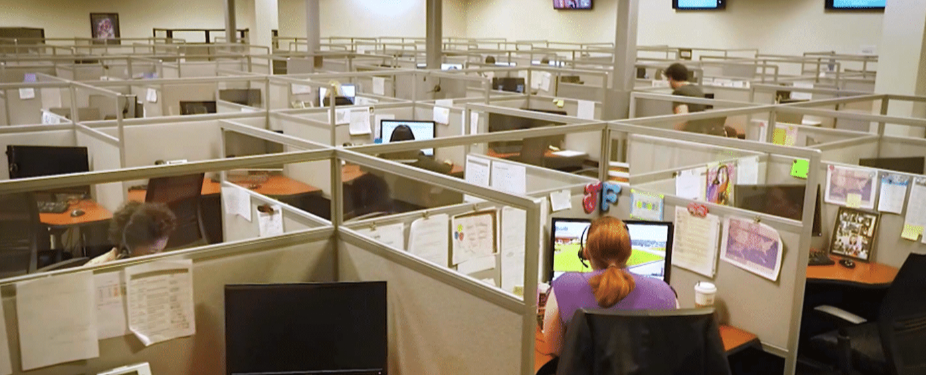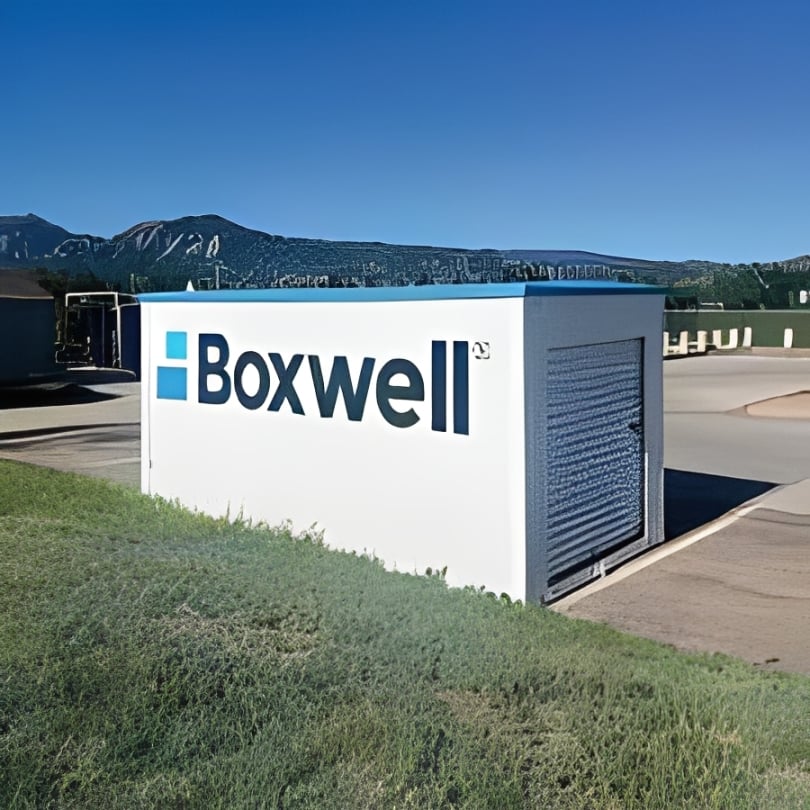Who's Who in Self-Storage: John Traver, CEO of XPS Solutions
Since it’s flu season, let’s contemplate this hypothetical situation: A full-time property manager of a moderately busy self-storage facility wakes up with a fever, body aches, and nausea. She needs to call off work for the day, but the facility’s only relief manager quit two weeks ago. He had to take another position with more hours because of inflation. Although the owner-operator has been searching for a suitable replacement, so far none of the candidates have panned out. A handful of people expressed interest in the position but needed more hours/pay/benefits than the owner-operator could afford to offer. Moreover, there’s not enough money in the budget to hire a second full-time manager.
With the manager unable to cover her shift today, or the remainder of the week while she recovers, the owner-operator has two options: operate the office himself or allow the office to remain closed until the manager returns. If he decides to open the office, he must commute four hours from home each day or rent a hotel room for the week, both of which will cost him time and money. On the other hand, keeping the office unexpectedly closed for an entire week would be bad for business, especially when they have no call center or online rentals in place.
That fictional, yet entirely possible, scenario hits on some of the main reasons more and more self-storage operators are seeking remote management options for their properties: ongoing staffing issues, increasing payroll costs, and rising customer expectations.
While COVID-19 prompted plenty of operators to implement remote management or a hybrid model, either temporarily or permanently, and many variations from various vendors now exist, at least one company has “always been remote.” Therefore, in this edition of “Who’s Who In Self-Storage,” John Traver, owner and CEO of Richardson, Texas-based XPS Solutions, discusses the efficiencies and cost savings of remote management.
“From day one in December 2000 at XPS, we were in the remote management business,” says Traver, who sold his dealer services company that managed inbound leads for the automotive industry that year and purchased XPS Services in 2004. “Back then, we took calls with a centralized call center. Now, 24 years later, one can see how that call center evolved into a contact center. Next, it provided a payment processing hub, then a rental team, and today it supports collections, move-ins/move-outs, and virtually anything an on-site property team will need to be prepared to do. We do this with technology, integrations, and the proper training and people. And we aim to do it for a fraction of the direct cost the properties will incur on their own. It’s a model the REITs have been using to conquest market share from the independents for decades in the self-storage space.”

Paring Down Payroll
Apart from property taxes, payroll is oftentimes an operator’s greatest expense. Unfortunately for employers, it’s also an overhead that continues to climb to match employees’ ever-increasing wage expectations and offset the inflated cost of living. So, it’s no surprise that operators are seeking alternatives to traditional on-site management.
To reduce payroll expenses, operators are turning to remote management options like XPS Solutions’ Remote Management Suite™, which offers comprehensive management solutions and, according to Traver, can result in a cost savings of one-third to one-half of a self-storage facility’s payroll expense, depending on the property’s location, size, and customer service needs. He breaks down the payroll calculations to support that claim. First, with minimum wage being $15 in many areas across the country, it’s necessary to offer a salary that exceeds that amount to attract and retain quality candidates. As such, Traver uses a reasonable wage of $18 per hour as an example. A full-time manager who works 40 hours a week at that rate makes approximately $3,000 per month and $37,000 per year. And that amount doesn’t include any of the fringe benefits employees want from an employer, such as the basics of PTO, sick time, medical, dental, and vision.
However, to meet customers’ expectations and keep the property operating as intended, it could be necessary for a facility to have more than 40 office hours per week, and that would require additional staff. “You’d need more than one manager,” says Traver, who points out that it’s already “difficult filling seats.”
Alternatively, he says that remote management services from XPS cost as little as $6 per hour and provide coverage for 87 hours per week. In other words, their remote management services more than double the availability of one full-time manager while costing less per month (on average) than their typical salary. As a matter of fact, when compared to his calculation of $18 per hour, their remote management services are $500 less per month than a full-time manager’s salary at only $2,500. That annual savings of $6,000 would certainly result in a “stronger NOI,” and strengthening net operating income should be the goal of every business owner.
While these savings are substantial, effectively operating a self-storage facility still requires some sort of on-site presence for handling maintenance, cleaning, and other issues that may arise. An operator could partner with a vendor that specializes in this aspect or “hire a local person who can quickly and easily access the property,” says Traver. “Ideally, they would be able to service multiple locations. The industry standard is to hire them as a contractor, meaning no fringe benefits or additional expenses outside of their base pay.”
Compete With REITs
In addition to reducing payroll costs, Traver states that remote management services can enable independent owner-operators to “compete with REITs” by enabling them to tap into similar economies of scale. On top of expanded staffing coverage, remote management services may include outbound sales lead follow-up, comprehensive move-in/move-out services, tenant support (assistance with autopay setup, address changes, billing updates, etc.), delinquent account support, call center services, and website services—all of which are intended to “ease the workload and labor for owners seeking remote solutions.”
“We’re mirroring what the REITs are doing,” he says. “Operators couldn’t compete with them before, but these remote management services come at a comparative cost and help them get a share of the market.”
Because piecing together each necessary component of remote management can be time consuming and cost prohibitive for one individual operator, an all-inclusive remote management solution, similar to third-party management, is becoming a practical option.
“Remote management and third-party management are very similar,” says Traver. “Depending on the level of remote management package purchased, you may find that services like accounting, maintenance, and rate management are not included; however, there are numerous vendors to partner with in the industry for those. Because remote management is significantly lower cost than the typical third-party management contract, you can outsource those services and still see savings on expenses.”
Minimizing Friction
When it comes to meeting the continually increasing expectations of customers, remote management can alleviate (or possibly eliminate) friction from the customer experience through API integration. “Having the ability to show real-time rates and availability to your remote management team allows them to provide excellent customer service,” says Traver. “The last thing you want is a customer to arrive at your facility with a truck full of furniture, and the unit they thought was available is actually not.”
He goes on to say, “Because the tenant experience is essential to a property, you want to be proactive at expanding your hours of coverage and providing these services.” And reducing potential pain points throughout the rental process is imperative so that tenants don’t leave. “How you deliver storage matters. You need to do it well. It’s spending pennies to get people to stay versus spending dollars to get new clients.”
For instance, XPS Solutions’ MyStorPal app, which is free to tenants, enables them to view a map of the property, retrieve their door code, and label their stored contents, allowing for a smoother rental experience. “They can do it all through their mobile device,” he says.
While technologies create efficiencies and improve the rental process, Traver acknowledges that each facility has different needs, and not every advancement may be accepted with open arms. As an example, he reveals that they’ve experienced “some consumer pushback” when utilizing artificial intelligence (AI) in payment processing. “Tenants’ voices matter,” he says, noting that they have since taken a different approach to that aspect of remote management.
Finally, XPS’ Remote Management Suite minimizes friction through its team and its focus on being “HFK: helpful, friendly, and kind.” They are educated how to be helpful and are “going the extra mile.” He likens it to the level of customer service experienced at the Ritz. “We don’t just tell them; we take the time to show them.”
His last piece of priceless advice: “When all else fails, kindness doesn’t.”
–
Erica Shatzer is the editor of Modern Storage Media.
More Content
Popular Posts
The self storage industry is in a precarious...
Joe Shoen, CEO of U-Haul, has had enough.
Like its name implies, Surprise, Ariz., a...
Joe Shoen has had enough.
In a record-breaking deal finalized May 12,...
Senate Bill 709 (SB709) has many in the...
Donald Trump has just reclaimed the White...
The question of “abandonment” of stored...
Self-storage operators wear a lot of hats....
In 1992, Clinton strategist James Carville...
Recent Posts
From policy pivots in Ottawa to tariff...
Self-storage operators have struggled to...
Their signature red coats may draw attention...
Nailing down Josh and Melissa Huff for an...
Most self-storage operators are running...
The storage industry has long been a sound...
Despite widespread adoption of modern...
This year marks a major milestone for...



















